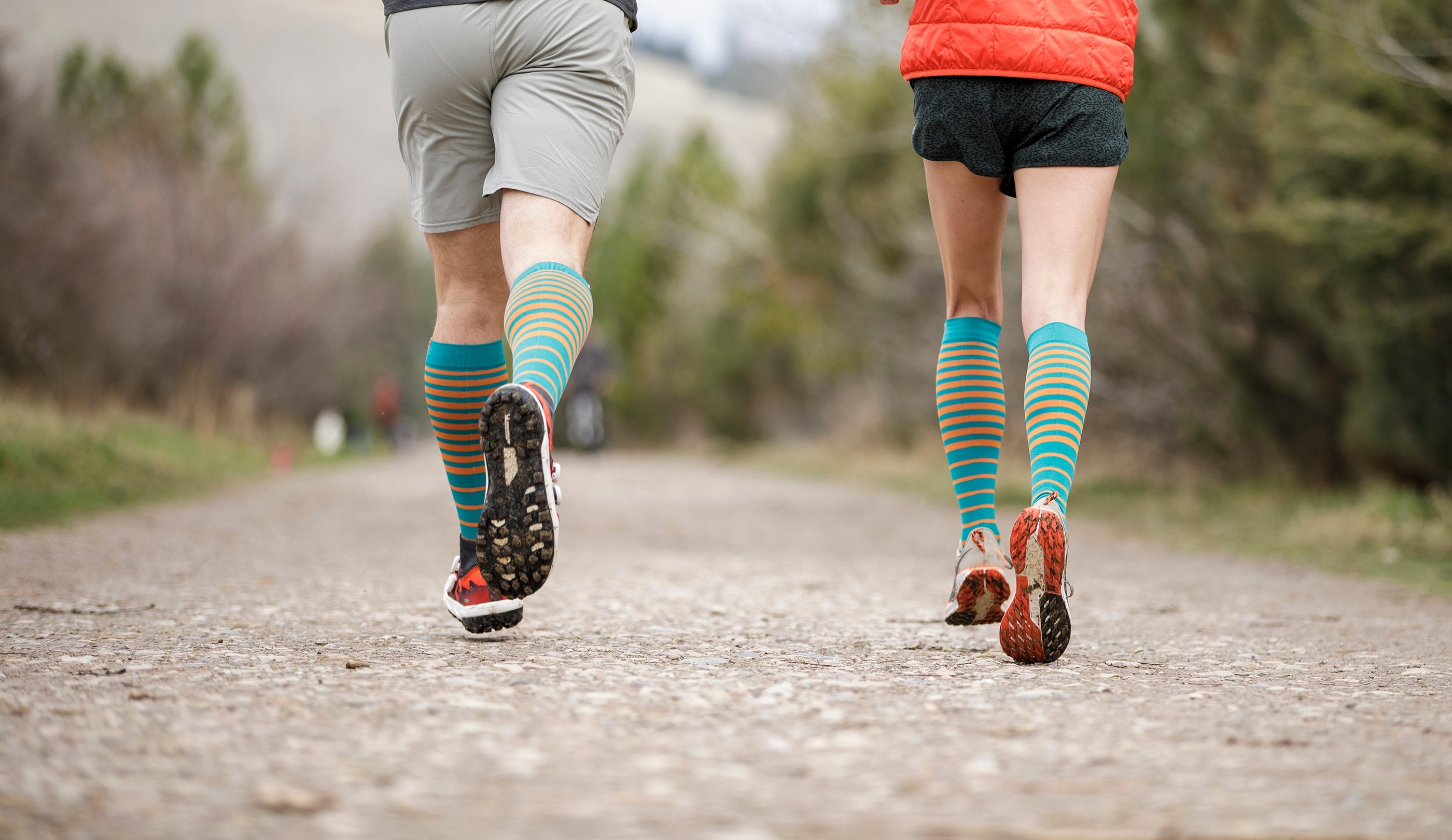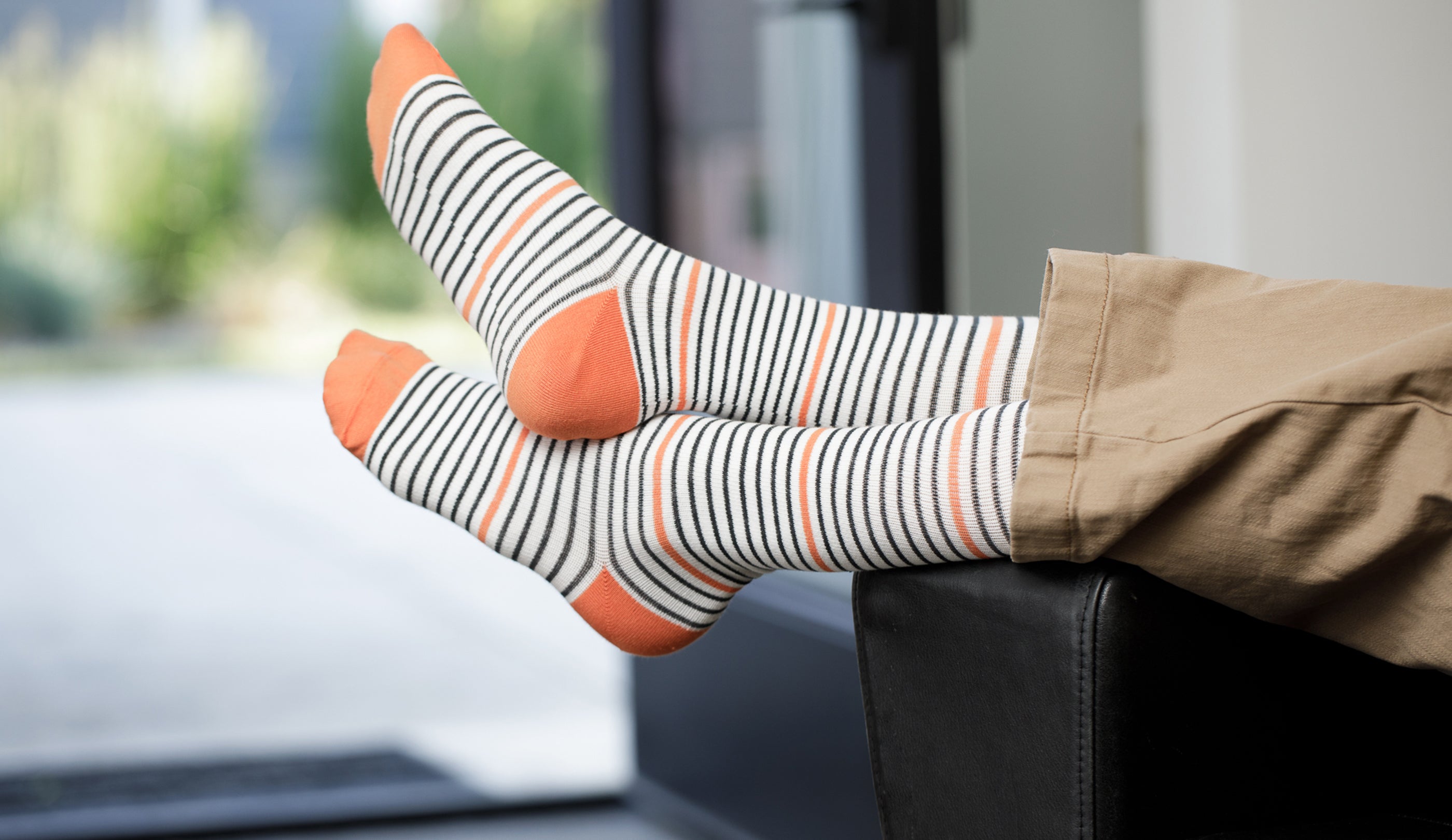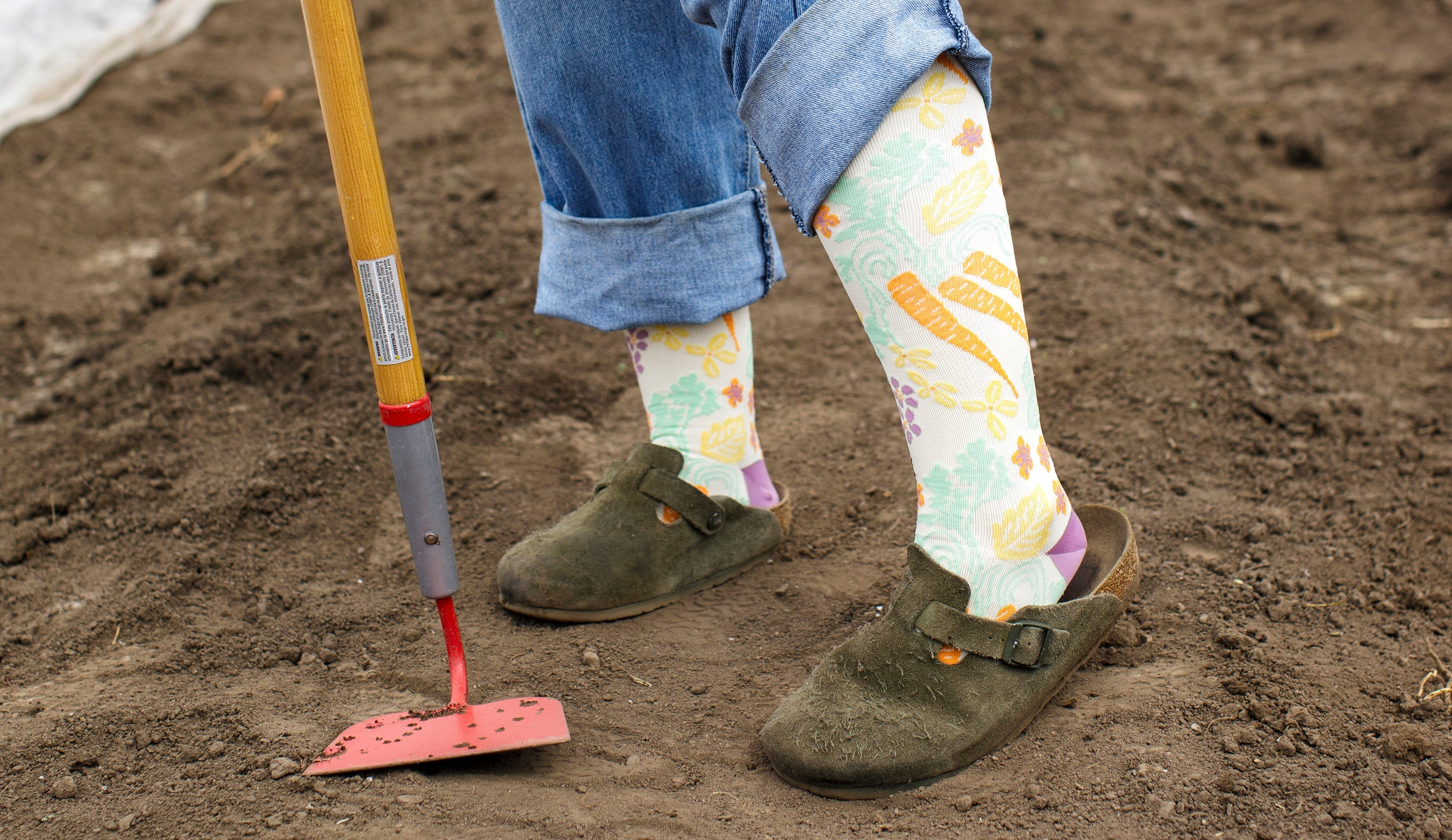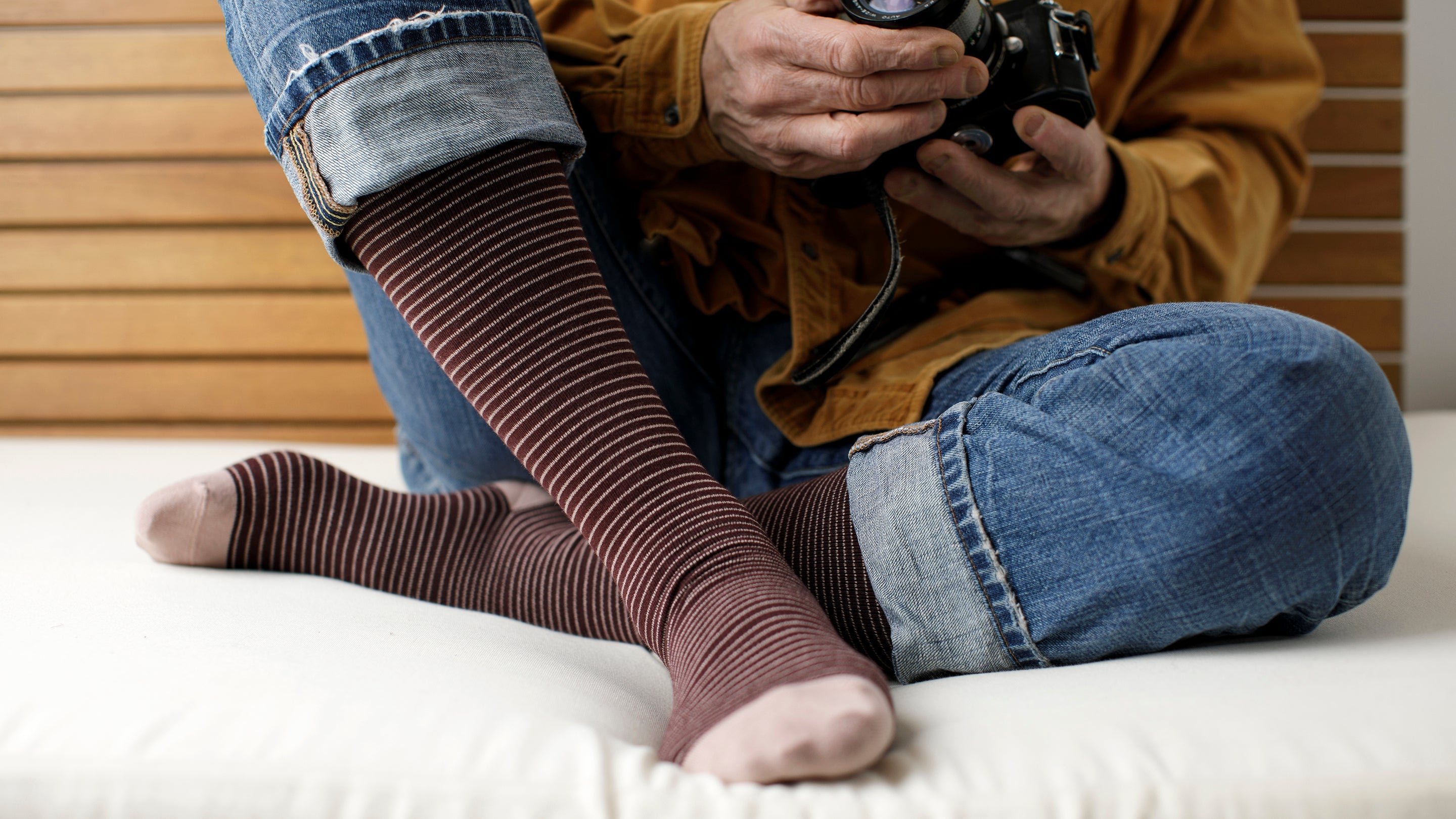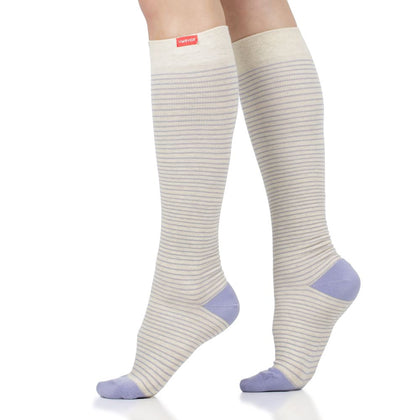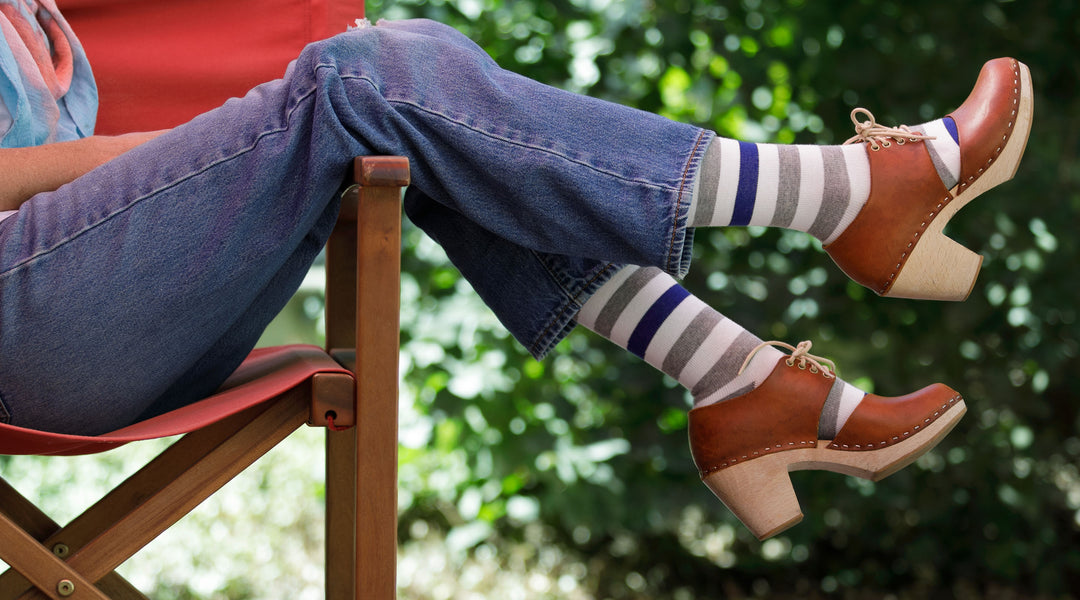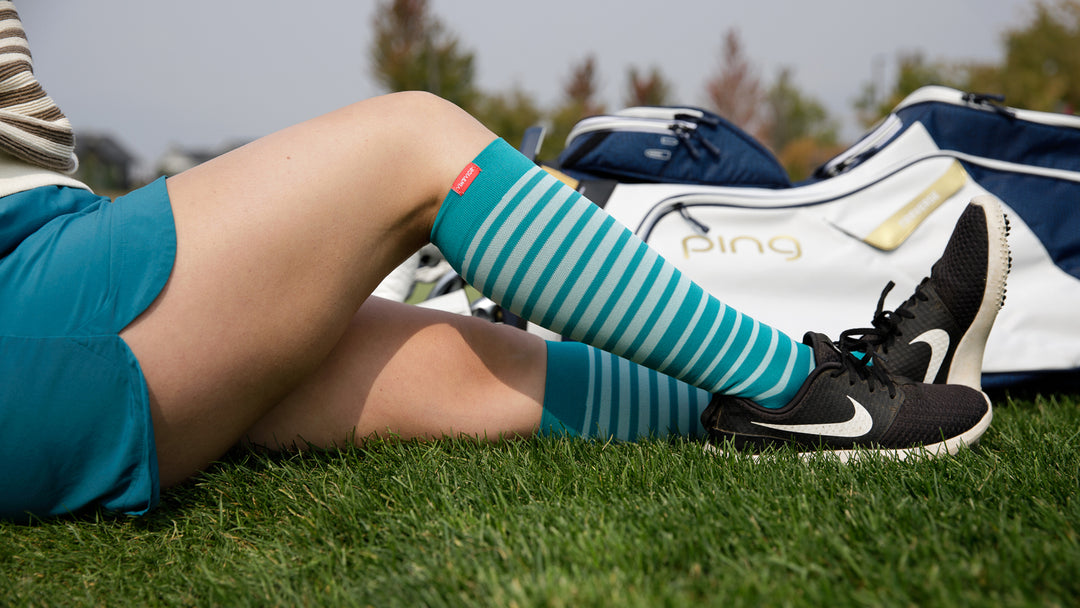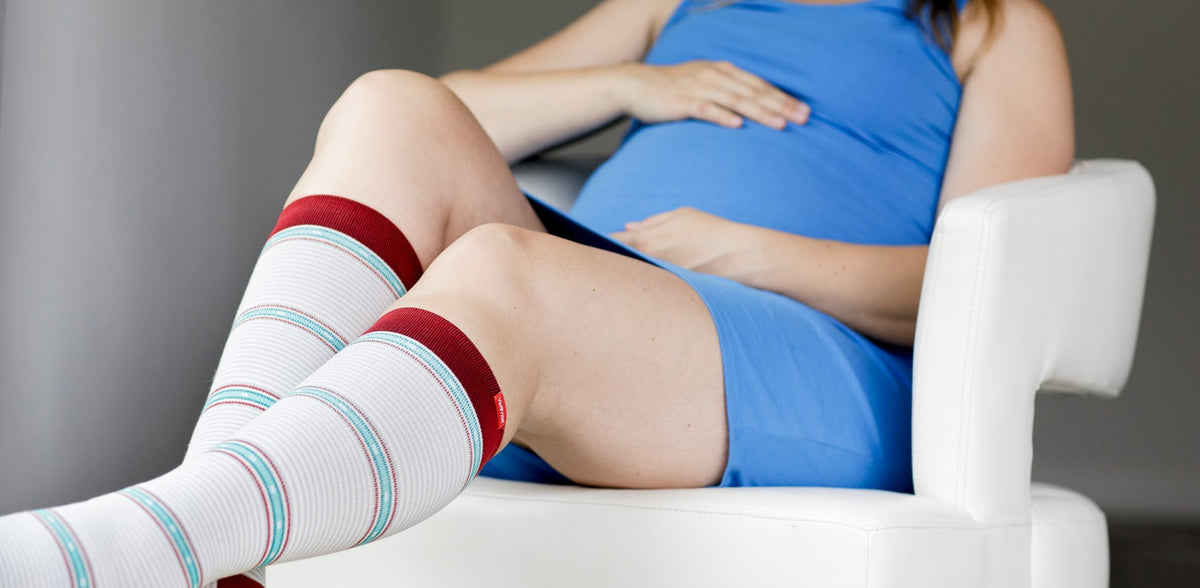

Compression socks provide comfort and support to your legs throughout pregnancy. They are great for managing swelling caused by the increase in body fluid. Scientific research found that body water can increase by as much as 8 liters during this time! Not only do compression socks decrease foot and leg swelling during pregnancy, they are also great for massaging the muscles and supporting the joints and for reducing your risk of circulatory problems.
But, when it comes to labor, do compression socks help or are they unnecessary? The answer is not quite so straightforward as a “yes” or “no.” The general benefits of compression socks will continue to positively affect your legs, just as they do before and after giving birth. But is there any medical advice on whether you should wear compression socks while giving birth? Read on to find out how compression socks may benefit you during labor and how to choose the best pair for you.
Should You Wear Compression Socks During Labor?
Of course, you do not need to wear compression socks during labor. However, because research shows that compression socks can help improve circulation, keep swelling down, and potentially prevent complications, like hypotension or deep vein thrombosis, it may be a good idea to wear them to support your heart and veins during labor.
For expecting mothers who have been using compression socks to manage pregnancy side effects and support their peripheral circulation, continuing to wear them during labor makes sense. Good quality socks are also comfortable, supportive, and soothing during a stressful time.
After giving birth, you will want to wear your compression socks to continue to stimulate blood flow and lymphatic drainage, especially if you are on bed rest. This medical article discusses that lower body compression improves blood flow in the postpartum period, which reduces your risk of blood clots. Additionally, it will reduce fluid pooling at the extremities that could cause swelling, pain, and discomfort.

Benefits of Compression Socks During Labor
Thanks to the therapeutic pressure they apply on the lower limbs, compression socks help improve circulation, keep down swelling, and prevent medical problems such as deep vein thrombosis. They also provide warmth and comfort during pregnancy and labor, as well as during your recovery. Here is what you can expect from wearing compression socks during and around labor.
Improved Circulation
Overall, wearing lower limb compression garments improves circulation and facilitates the return of blood back towards the heart. This reduces the risk of blood clots, varicose veins, and other complications. It is also linked to feeling more energized, avoiding the “heavy legs” feeling or pins and needles, numbness, and pain caused by blood or lymph fluid pooling at the ankles.
Wearing compression socks during labor is not strictly necessary, especially if you’ve been wearing them in the latter stages of pregnancy to support your circulatory system. However, one study suggests that pregnant women have less leg pain and a better quality of life when wearing compression socks. So, you may feel more comfortable having a pair of compression socks on while giving birth. Compression helps keep the feet warm (particularly helpful if you are prone to getting cold feet).
Importantly, many women use an epidural to manage labor pains and reduce the risk of low blood pressure when giving birth, known as maternal hypotension. A study was conducted in 2017, considering that 10 to 20 percent of the 600,000 women having an epidural in France experienced hypotension, which in 15 percent of cases could lead to fetal heart rate abnormalities. Those women who wore compression socks were significantly less likely to suffer from low blood pressure - showing another benefit of wearing these types of garments during labor.
Reduced Swelling
Compression socks are known to prevent pregnancy edema in the lower legs. One study from 2022 found that pregnant women felt more comfortable in compression socks and reported feeling better when wearing them. However, swelling can become worse in the later stages of pregnancy when you are likely to be less mobile. This then continues during labor, especially if you must be in a reclined or semi-upright position for a long time.
Wearing graduated compression socks squeezes the muscles and stimulates blood flow, while preventing fluid build-up as you are busy focusing your efforts on giving birth. You will not need to do anything special and there is no need for additional massages or distractions!

Preventing Deep Vein Thrombosis (DVT)
Deep vein thrombosis can develop when blood clots form in the legs, so keeping blood flowing through the lower limbs is essential throughout your pregnancy. While the risk of DVT is lower during labor than, for example, during a long-haul flight (according to the CDC), keeping your compression socks as you head to the hospital can be part of a good routine to prevent any circulation problems.
Warmth, Comfort, and a Sense of Support
Giving birth is a daunting moment, where any support can be beneficial (even if just psychological!). Therefore, wearing your favorite pair of compression socks in a fun, bright pattern can lift your spirits, calm your nerves, and give you a reassuring feeling of support in the lower legs. Plus, soft and warm socks like those made from merino wool will keep your feet cozy and prevent additional discomfort while you wait or after giving birth (it is highly unlikely you will be thinking about them during!).
Is It Safe to Wear Compression Socks During Labor?
Compression socks are safe to wear during labor if you are not covering open cuts or wounds or medical complications. The tight grip could damage an open wound, but otherwise, there are no known risks or side effects from wearing compression garments during this time, as long as they are worn correctly and you have no other medical conditions that could cause concern.
If you have any doubts about your personal medical history and how this may interact with compression wear during labor, please consult with your doctor.
How to Choose the Best Compression Socks for Labor and Recovery
To keep your lower legs and feet warm and swelling free, pick a pair of compression socks that are tight enough to boost your circulation without being uncomfortable. It is also important to find the right fit for you, the appropriate fabric, and the style that will make you smile!
Understanding mmHg
Compression socks apply therapeutic pressure to the limbs, which is measured in mmHg. At Vim & Vigr, we offer three categories of compression. You will be familiar with compression socks by the time you go into labor, as we expect that you will be wearing them during pregnancy. Now is not the time to change the compression level, but here is a recap for purchasing your favorite pair:
- 15-20 mmHg is everyday compression, suitable for athletic activities or wearing at the office; you may have been wearing these socks during your pregnancy, and it is fine to wear them during labor.
- 20-30 mmHg is firmer compression, which we often see pregnant women wearing, especially if they are identified to be at risk of developing varicose veins or blood clots; in the study we mentioned about preventing hypotension during an epidural, women wore 20-36 mmHg compression socks.
- 30-40 mmHg is medical grade compression, prescribed by doctors in specific cases - you will be advised by your doctor if this is right for you.
Always consult with a medical professional before going up in compression levels during pregnancy and labor.
Picking the Right Fabric and Style
Not all compression socks are the same, varying in breathability, how they feel against the skin, and how quickly they dry or wick away moisture. This is why you should consider the fabric of your socks before deciding what you will wear on the maternity ward - as it can have a significant impact on your comfort levels.
Generally, most people will prefer everyday cotton socks during pregnancy and even labor. Cotton is soft and flexible, but does not wick away moisture quite so well, so it will not be the best choice for hot or humid climates (or if you know your feet sweat a lot!). The better option in that situation is merino wool - antibacterial, hypoallergenic, and highly breathable. And, if you love your nylon compression socks for their flexibility, you could opt for our moisture wick nylon material to ensure your feet are dry and warm the whole time you’re in hospital.
Finally, a word on style. Vim & Vigr compression socks give you support and a blood flow boost in lively patterns and colors, but you also have the option of picking styles other than the traditional knee-high compression socks:
- Open toe socks could be an option if you need to let your toes breathe or want to be able to walk around in flip flops on the hospital floor.
- Calf sleeves are also sometimes preferred by women who are concerned about getting cramps in the lower leg muscles but prefer to be barefoot otherwise.
Finding the Perfect Fit
It is important to have socks that fit well so you can get the full benefits of compression. We include a sizing chart on each product page and recommend that you measure the circumference of your calves so you can match that against your shoe size.
During pregnancy, you may find that the muscles in your posterior chain get tighter as they try to counterbalance the weight pulling you forward. The increase in blood volume and water retention could also contribute to more swelling in the calf muscles. As a result, you can expect to need to switch to a wide calf version of your favorite socks in some instances. Measure again if you find that your socks are feeling too tight as you move from one semester to the next.
—
Giving birth is a highly personal and intense experience, where any form of support can make a huge, positive difference. Compression socks are not essential for the labor period, but they have been proven to increase physical and emotional comfort, as well as prevent certain complications in specific cases. Moreover, your doctor may recommend them if you are at risk of blood clots or DVT.
To find a pair of compression socks that will see you through labor and the recovery afterwards, browse our dedicated maternity and pregnancy collection.
References
Allegra, C., Antignani, P. L., Will, K., & Allaert, F. (2014). Acceptance, compliance and effects of compression stockings on venous functional symptoms and quality of life of Italian pregnant women. International angiology: a journal of the International Union of Angiology, 33(4), 357–364. Read it here.
Charles, T., Mackintosh, D., Healy, B., Perrin, K., Weatherall, M., & Beasley, R. (2011). Merino wool graduated compression stocking increases lower limb venous blood flow: a randomized controlled trial. Advances in therapy, 28(3), 227–237. Read it here.
Davison J. M. (1997). Edema in pregnancy. Kidney international. Supplement, 59, S90–S96. Read it here.
Jamieson, R., Calderwood, C. J., & Greer, I. A. (2007). The effect of graduated compression stockings on blood velocity in the deep venous system of the lower limb in the postnatal period. BJOG: an international journal of obstetrics and gynaecology, 114(10), 1292–1294. Read it here.
Peyronnet, V., Roses, A., Girault, A., Bonnet, M. P., Goffinet, F., Tsatsaris, V., & Lecarpentier, E. (2017). Lower limbs venous compression reduces the incidence of maternal hypotension following epidural analgesia during term labor. European journal of obstetrics, gynecology, and reproductive biology, 219, 94–99. Read it here.
Sachdeva, A., Dalton, M., & Lees, T. (2018). Graduated compression stockings for prevention of deep vein thrombosis. The Cochrane database of systematic reviews, 11(11), CD001484. Read it here.
Saliba-Júnior, O. A., Rollo, H. A., Saliba, O., & Sobreira, M. L. (2022). Positive perception and efficacy of compression stockings for prevention of lower limb edema in pregnant women. Jornal vascular brasileiro, 21, e20210101. Read it here.
